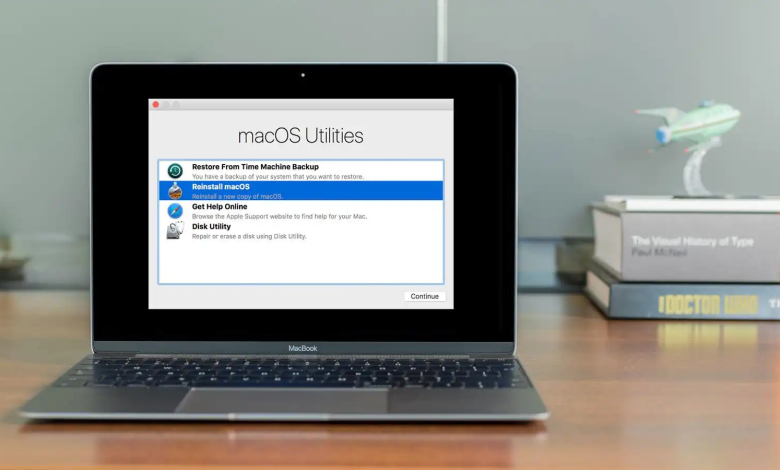
Technology has evolved at a remarkable pace over the past decade, transforming how we interact with our devices and recover from system issues. Whether it’s a smartphone or a laptop, recovery systems are becoming more intelligent, user-friendly, and capable of fixing complex problems with minimal user input. Apple, known for its innovation and seamless user experience, has been at the forefront of this evolution. With the integration of artificial intelligence (AI) into diagnostic and recovery systems, users now have access to smarter and more efficient recovery options. In this article, we’ll explore how AI is reshaping system recovery, how Mac Recovery Mode fits into this smart ecosystem, and what the future holds for AI-powered recovery solutions.
The Evolution of System Recovery
System recovery tools have long been essential for troubleshooting software issues, reinstalling operating systems, and restoring devices to working order. In the early days, recovery meant using external media like CDs or USB drives to reinstall the OS manually. These methods were time-consuming, required technical know-how, and often led to data loss if not done carefully.
As operating systems advanced, recovery tools became more sophisticated. Built-in recovery partitions replaced external media, allowing users to repair their systems directly from their devices. However, these tools were still limited , they required users to know what went wrong and how to fix it.
AI has started to change this paradigm by introducing smarter diagnostics and predictive capabilities. Instead of waiting for users to identify problems, AI systems can detect anomalies in system performance, predict potential failures, and even suggest automated fixes before issues escalate. This evolution is paving the way for faster, safer, and more intelligent recovery experiences across devices.
How Artificial Intelligence is Changing the Recovery Landscape
Artificial intelligence is redefining how systems identify, interpret, and resolve issues. Traditional recovery relied heavily on static troubleshooting steps , reboots, reinstallations, or manual resets. AI-driven recovery, however, uses data, context, and pattern recognition to handle problems more dynamically.
For instance, AI can monitor system performance in real-time, detect abnormal processes, and recommend specific recovery actions based on past system behaviors. Machine learning algorithms can analyze millions of error reports to identify the root causes of problems faster than any human technician could. This not only shortens downtime but also prevents future errors by learning from past incidents.
AI-powered tools can also guide users through the recovery process with greater clarity. Instead of cryptic error codes or complex instructions, intelligent assistants can explain what’s wrong and suggest simple, actionable steps. Some advanced systems can even perform automated repairs, reducing user intervention and technical barriers.
In short, AI is making recovery systems proactive, self-learning, and highly adaptive , qualities that traditional recovery tools lacked. This shift aligns perfectly with Apple’s vision of simplicity and user empowerment, which is evident in how its recovery systems have evolved over time.
Understanding macOS Recovery and Its Role in Smart System Management
When Apple introduced macOS Recovery, it revolutionized how Mac users troubleshoot and repair their systems. This feature allows users to access powerful recovery tools directly from their devices without needing installation media or external drives. It’s designed for ease of use , even for those without deep technical expertise.
macOS Recovery includes options like reinstalling macOS, restoring from Time Machine backups, accessing Disk Utility for drive repairs, and using Terminal for advanced troubleshooting. These functions give users control over their systems while maintaining Apple’s signature user-friendly design.
However, the true brilliance of mac Recovery Mode lies in how it seamlessly integrates with Apple’s ecosystem. It connects to Apple’s servers to verify installations, ensures that the latest versions are installed, and maintains security through its built-in firmware protections. Combined with AI-powered system monitoring, this integration is turning the recovery process into a smart, adaptive experience that prioritizes both efficiency and security.
By blending AI and macOS Recovery, Apple is creating an environment where devices can self-diagnose and self-heal. This not only saves time but also reduces the risk of data loss and system corruption. As AI continues to mature, these features will only become more predictive, offering solutions before users even notice a problem.
The Role of AI in Predictive Maintenance and Diagnostics
One of the most powerful applications of AI in recovery is predictive maintenance. Traditional systems react to failures after they happen, but AI allows devices to anticipate issues before they occur. Predictive maintenance uses data analysis and machine learning models to detect irregular patterns in performance , such as declining disk health, overheating, or software conflicts , and alerts users to take preventive measures.
For Mac users, this could mean receiving notifications about system anomalies long before they cause crashes or data loss. Imagine an intelligent assistant that recognizes your hard drive’s health is declining and advises you to back up or replace it. Or, it could automatically trigger a maintenance process through mac Recovery Mode, preventing downtime and ensuring smooth operation.
AI also enhances diagnostics by cross-referencing massive databases of known system errors and solutions. Instead of relying on user-reported symptoms, it can analyze log files, app performance, and hardware metrics to pinpoint the exact source of trouble. This precision drastically reduces repair time and the need for professional intervention.
The integration of predictive diagnostics with built-in recovery systems marks a major step toward self-sustaining devices , machines that can maintain themselves with minimal user input. This capability not only improves user experience but also extends device longevity and reliability.
Security and Privacy in AI-Powered Recovery Systems
With any AI-driven system, data privacy and security are major considerations. When it comes to recovery tools, these concerns become even more significant because such tools often access sensitive system files, user data, and credentials.
Apple has consistently prioritized privacy, and this extends to its recovery ecosystem. When macOS connects to Apple’s servers during a recovery session, communications are encrypted and verified. AI algorithms that analyze performance data are designed to work locally as much as possible, minimizing the sharing of personal information.
In the future, we can expect even stronger privacy frameworks as AI systems grow more capable. Decentralized AI processing , where most computations happen directly on the device , will play a key role in balancing intelligence and confidentiality. Apple’s focus on on-device learning, as seen in other areas like Siri and Face ID, is likely to influence how AI integrates into macOS Recovery as well.
The Future of AI and Mac Recovery: Self-Healing Systems
The convergence of AI and advanced recovery modes is steering us toward a future where devices can self-repair without human intervention. These self-healing systems will use continuous monitoring, automated diagnostics, and real-time updates to maintain peak performance.
Imagine a Mac that senses declining system performance, isolates problematic files, repairs corrupted software, and optimizes its configuration automatically. The device could detect malware-like behavior, neutralize threats, and even restore system integrity without requiring user action. All this could happen seamlessly in the background, supported by AI-driven predictive intelligence.
Such innovations would drastically reduce the need for technical support and empower users to handle recovery independently. More importantly, they would minimize downtime, a critical advantage for professionals and businesses relying on Macs for productivity.
As Apple continues to expand its AI capabilities, macOS Recovery could evolve into a full-fledged smart recovery assistant. It might provide real-time suggestions, integrate with cloud-based recovery analytics, and even coordinate with other Apple devices to ensure ecosystem-wide protection.
Conclusion
The integration of AI into recovery systems represents a major leap forward in digital resilience and user empowerment. Traditional recovery methods focused on fixing issues after they occurred, but AI enables systems to anticipate, diagnose, and prevent problems intelligently. Apple’s Mac Recovery Mode stands as a powerful example of this evolution, a blend of intuitive design, strong security, and intelligent automation.
As technology continues to advance, we can expect even smarter recovery systems capable of self-diagnosis and self-repair. These developments will make computing more reliable, secure, and effortless, allowing users to focus less on technical troubleshooting and more on creativity, productivity, and innovation.



